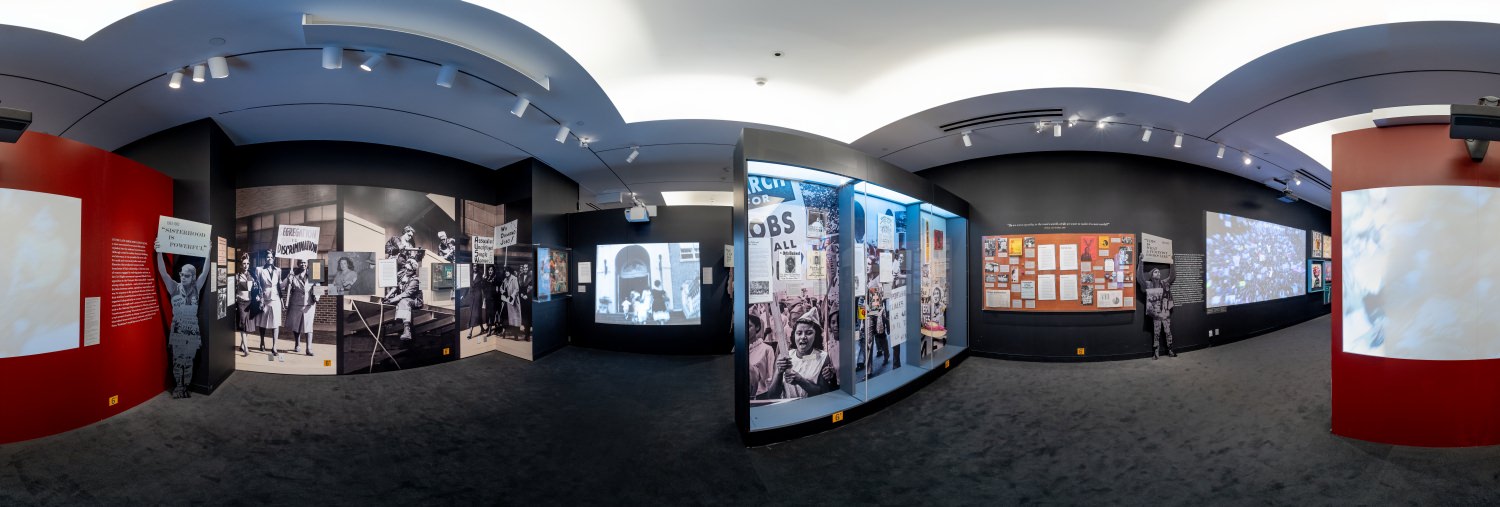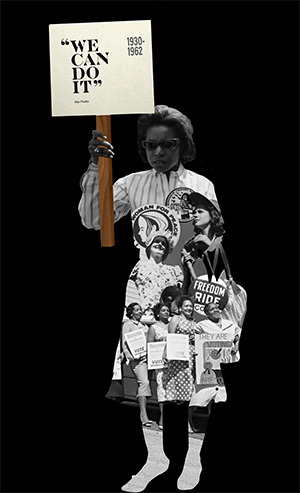
click for 360 tour
“We Can Do It”
–War Poster
During the 1930s, the Great Depression impacted women and their families across the country. Yet women’s collective action did not cease. While they rarely spoke of a “women’s movement,” American women mobilized for labor rights, victory, and civil rights. Their efforts demonstrated the power of women’s citizenship in action and laid the groundwork for the decades to come. Women went to work and organized unions, reshaping the labor movement and the New Deal. When war came, women marched into factories and auxiliary brigades, taking on the full responsibilities of wartime citizenship. During and after the war, Black women and their allies organized civil rights campaigns to make the nation live up to its democratic ideals. Women’s work was essential to these struggles, but even within social movements, activists faced sexism and gender discrimination. Women drew on these experiences when they began marching for women’s liberation in the 1960s. In so doing, they manifested the words of the famous war poster: “We Can Do It.”

Labor unions filmed rallies and May Day parades, the federal government produced slick films
to recruit women to military auxiliaries and industrial war work, and news organizations
covered efforts to desegregate schools.
International Ladies’ Garment Workers’ Union May Day Parade, New York City, ca. 1935
The Kheel Center for Labor-Management Documentation and Archives, Cornell University
Library
Glamour Girls of 1943, 1943. National Archives
Black Mothers Protest School Discrimination in New York, 1958
WSB Newsfilm Collection,The
University of Georgia Libraries